Last Saturday (30 June) we rather rashly decided to visit the Dorset coast – along with most of the rest of the UK, it seemed. The weather has been scorching and so we decided we wanted to see Man O’War Cove and Durdle Door, neither of which places we’d visited before.
Man O’War Cove is part of a larger bay called St Oswald’s Bay, and is marked at its western end by a headland of almost vertically-bedded rock. On the other side of this headland is the famous rock arch, Durdle Door, and another bay. The cliffs behind the bays are steep. Click on all photos to enlarge/embiggen/bigify.
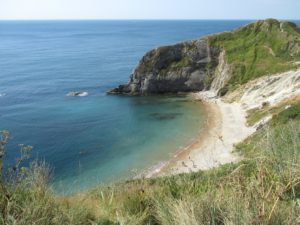
The view of Man O’War Cove as you approach from the car park. Durdle Door is on the other side of the headland, off to the right of the photo.
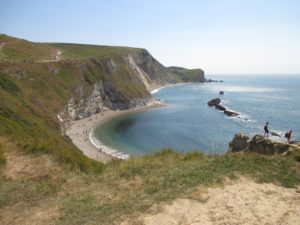
Man O’ War Cove is the nearer of the two bays: all together this is St Oswald’s Bay. The rocks in the sea are Man O’War Rocks, and the promontory separating the two coves is Man O’War Head. Looking to the east.
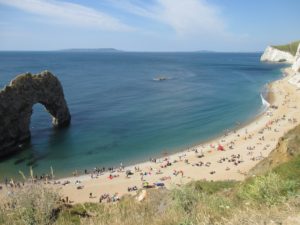
Durdle Door, with the high ground of the Isle of Portland (not actually an island) in the background to the left, and Weymouth in the background to the right.
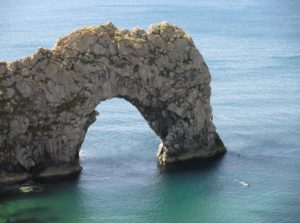
Durdle Door. Some lads were climbing up the right hand part of the arch and jumping off into the sea – you can make them out if you enlarge the photo.
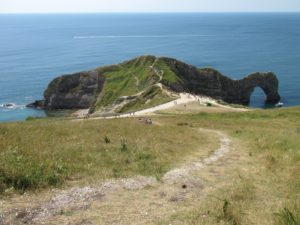
We climbed up a footpath back to the car park, and were rewarded with this fabulous view of the headland: Man O’War Cove on the left and Durdle Door on the right.
All the time we were there was a constant stream of green t-shirt clad walkers was coming from the west. They were all taking part in the Macmillan Cancer Support Jurassic Coast Mighty Hike, a 22-mile walk along the coast to raise sponsorship funds for this fantastic charity.
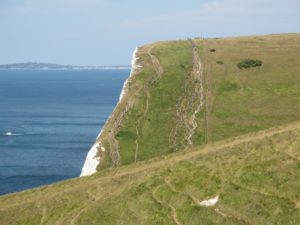
Green-clad charity walkers for the Mighty Hike organised by Macmillan Cancer Care. The walkers were doing a 22-mile walk in the scorching heat – much respect!
If you are interested in the geology of the area, this illustrated article is a good place to start.